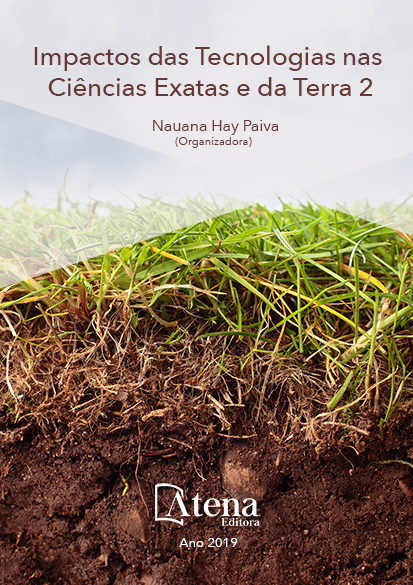
FLUXOS DE CALOR E RADIAÇÃO DE ONDA LONGA EM SUPERFÍCIE DURANTE TEMPESTADE TORNÁDICA EM TAQUARITUBA/SP
Este estudo visa analisar as
condições atmosféricas de grande escala, o
papel da radiação de onda longa (ROL) e os
fluxos de calor sensível e latente em superfície
durante a passagem de uma tempestade
na cidade de Taquarituba no Estado de São
Paulo. Essa tempestade desencadeou um
tornado que ocorreu no dia 22 de setembro
de 2013, por volta das 16:30 HL (Hora Local),
provocando prejuízos à população. Neste
trabalho, foram utilizados dados de reanálise
do modelo Modern-Era Retrospective Analysis
for Research and Applications (MERRA
2) e imagens de satélite da Geostationary
Operational Environmental Satellite (GOES-
13). A partir dos dados de reanálise foram
gerados campos atmosféricos e de fluxos de
calor e ROL para avaliar o comportamento
desses processos na evolução da tempestade
severa. Os resultados obtidos mostraram a
atuação do escoamento de Noroeste em 850
hPa transportando calor e umidade sobre
a região de Taquarituba e a difluência do
escoamento em 250 hPa contribuindo para o
disparo da convecção sobre a região. Também
foi possível observar a relação entre os fluxos
de calor e ROL indicando que a ROL se
deve, principalmente da emissão térmica em
superfície. O fluxo de calor sensível mostrou-se
negativo durante os três dias analisados (21 a
23) indicando que a atmosfera cedeu energia à
superfície. O fluxo de calor latente da superfície
apresentou valores elevados (em torno de 240
W m-2) no dia da tempestade mostrando a forte
relação desta variável com o desenvolvimento
de instabilidades convectivas sobre a região de
Taquarituba.
FLUXOS DE CALOR E RADIAÇÃO DE ONDA LONGA EM SUPERFÍCIE DURANTE TEMPESTADE TORNÁDICA EM TAQUARITUBA/SP
-
DOI: 10.22533/at.ed.53719220112
-
Palavras-chave: Tornado, Escoamento de Noroeste, Difluência do Escoamento, Sistema Frontal, Tempestade Severa.
-
Keywords: Tornado, Northwest Flow, Flow Diffluence, Frontal System, Severe Storm.
-
Abstract:
This study aims to analyze
large-scale atmospheric conditions, the role of
long-wave radiation (ROL), and surface and
latent heat fluxes during a storm in the city of
Taquarituba in the State of São Paulo. This
storm triggered a tornado that occurred on
September 22, 2013, around 16:30 HL (Local Time), causing damage to the population.
In this work, model reanalysis data from the Modern-Era Retrospective Analysis for
Research and Applications (MERRA 2) and satellite images of the Geostationary
Operational Environmental Satellite (GOES-13) were used. From the reanalysis data
were generated atmospheric fields and heat flows and ROL to evaluate the behavior of
these processes in the evolution of the severe storm. The results obtained showed the
performance of the Northwestern flow in 850 hPa transporting heat and humidity on the
Taquarituba region and the diffluence of the flow in 250 hPa contributing to the triggering
of the convection over the region. It was also possible to observe the relation between
the heat flows and ROL indicating that the ROL is due mainly to the surface thermal
emission. The sensible heat flux was negative during the three days analyzed (21 to
23) indicating that the atmosphere ceded energy to the surface. The latent heat flux of
the surface presented high values (around 240 W m-2) on the day of the storm showing
the strong relation of this variable with the development of convective instabilities on
the Taquarituba region.
-
Número de páginas: 15
- Kelli Silva de Lara


